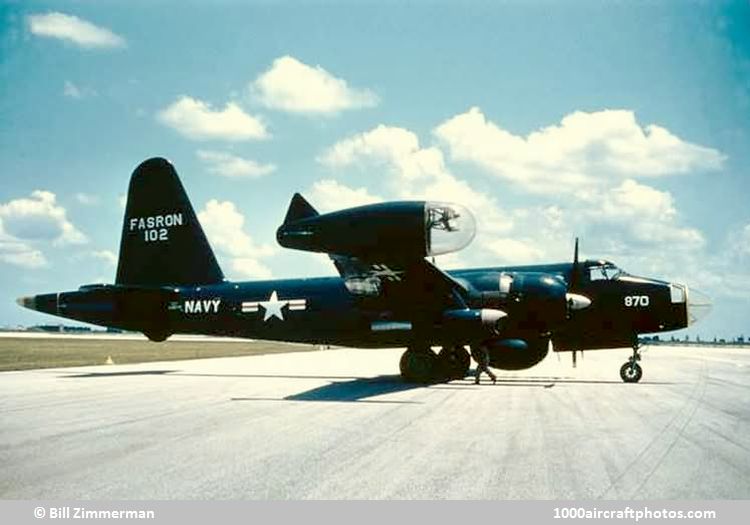Photographed at Breezy Point
NAS, Norfolk, Virgina, USA, summer 1954, by Bill Zimmerman
12/31/2007. Remarks by
Bill Zimmerman: "I was a non-flying member of Fleet Aircraft Service Squadron (FASRON) 102 in Hanger SP-1. The squadron was formed to help service our P5M patrol seaplane squadrons, VP-44 and VP-56. Just how FASRON got a P2V-5F is still a mystery to me.
The aircraft was one of 23 Model 426-42-06 P2V-5 built, powered by two 3,250 hp Wright R-3350-30WA Turbo-Compound eighteen-cylinder two-row supercharged air-cooled radial engines. Due to marginal power most P2V-5s were converted to P2V-5Fs, the R-3350-30WAs were upgraded to 3,500 hp R-3350-32Ws and two 3,250 lb (1,474 kg) st Westinghouse J34-WE-34 turbojets were slung from the wings. The type was redesignated P-2E in 1962.
Lockheed had preformed structural static testing on the various P2V models, however, full-scale fatigue testing was not performed as it was not required by the US Navy at the time of manufacturing. The Japanese Maritime Self Defense Force (JMSDF) used the P2V-7 aircraft and the JMSDF performed a full-scale fatigue test of a P2V-5 airframe modified to a -7 configuration with the assistance of the USN.
Therefore the BuNo. 124870 was shipped to Japan in 1966, and modified as much as possible to a P2V-7 configuration. From May 1968 to March 1969 the full-scale fatigue test frame simulated 12,990 flight hours, providing valuable data for the aging P-2 fleet."

